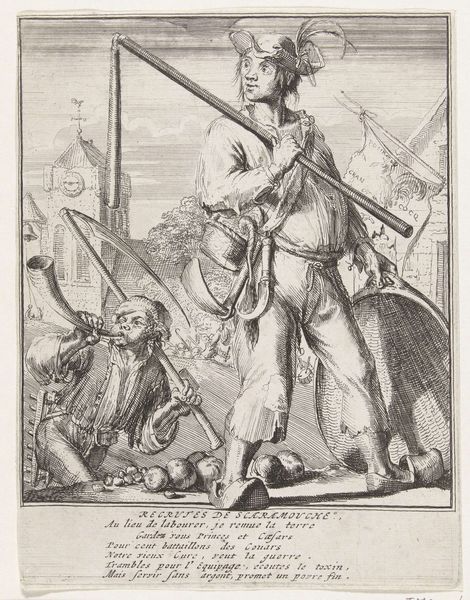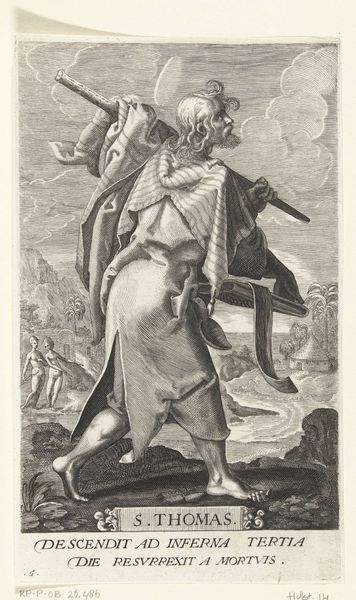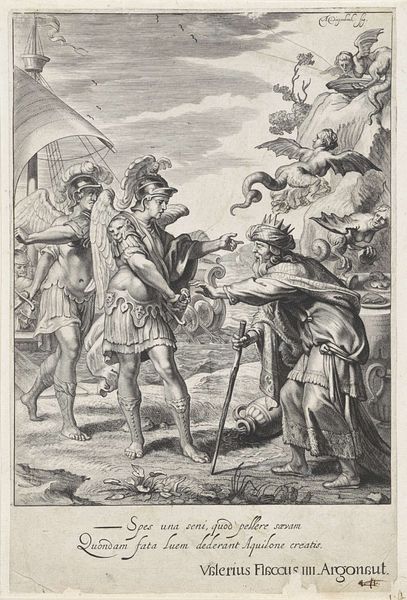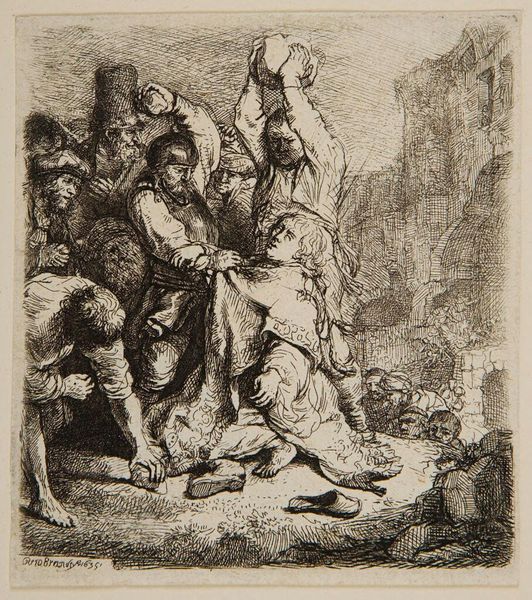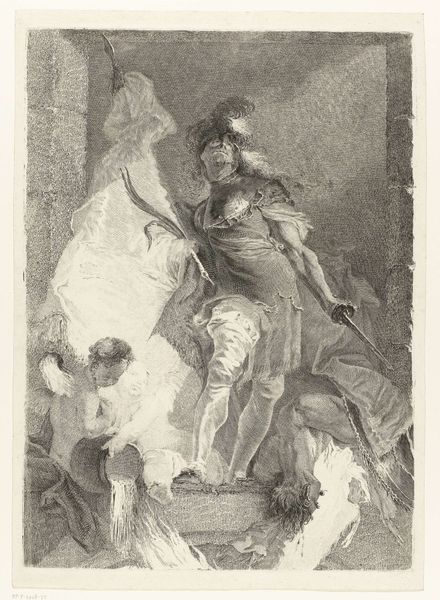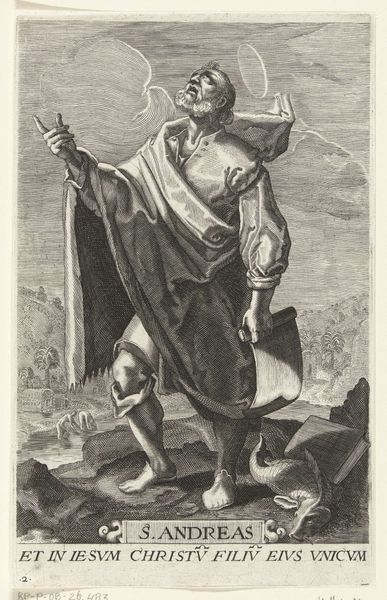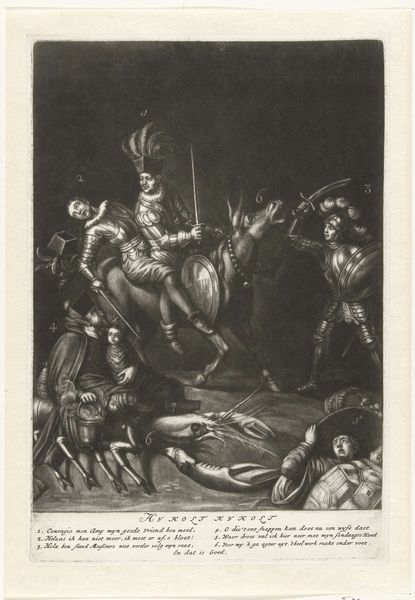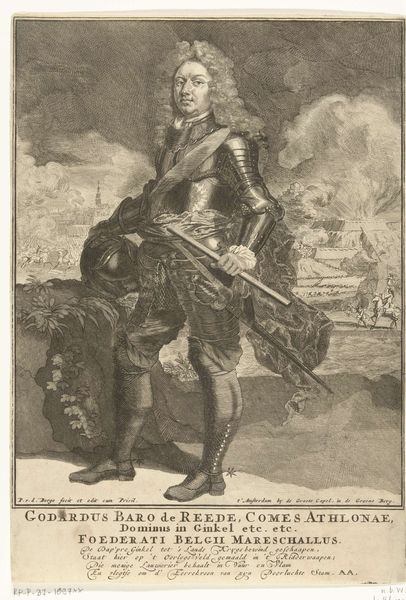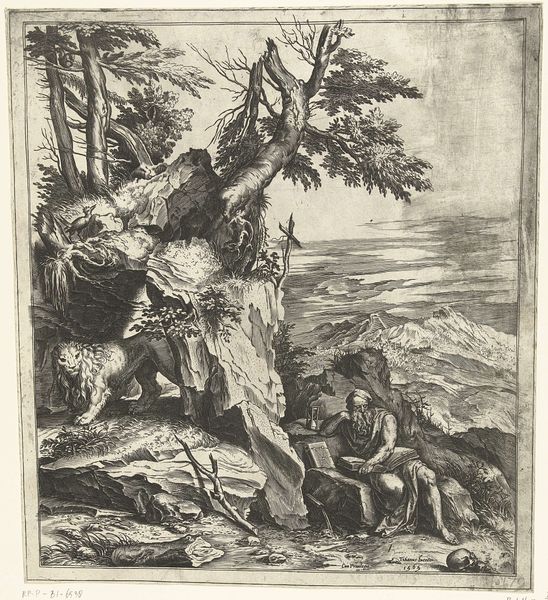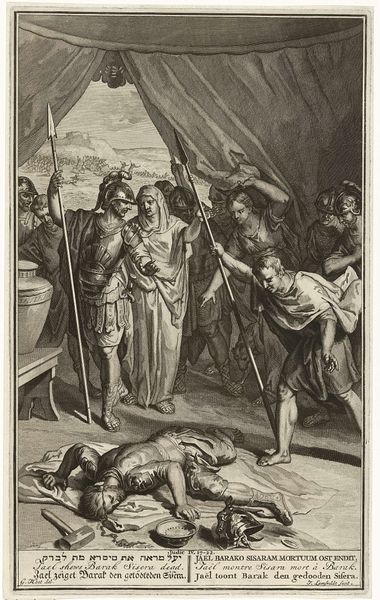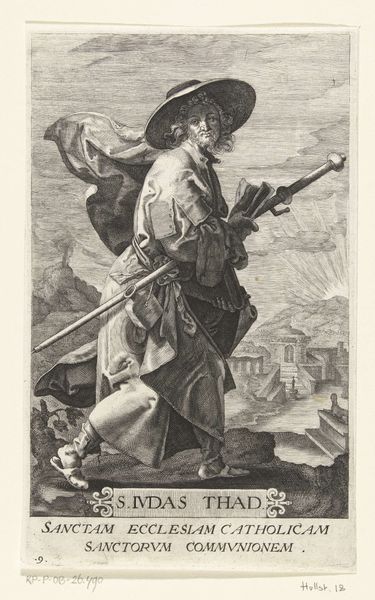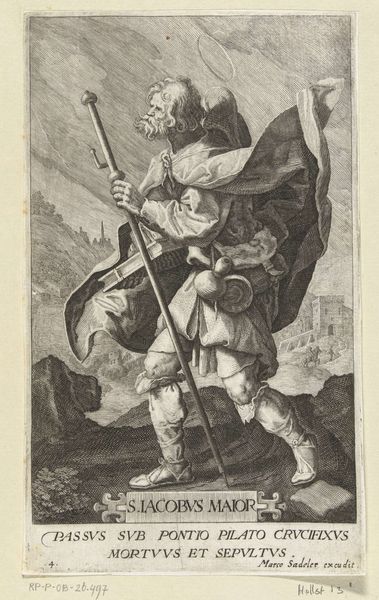
print, engraving
#
baroque
# print
#
landscape
#
figuration
#
history-painting
#
academic-art
#
engraving
Dimensions: height 460 mm, width 217 mm
Copyright: Rijks Museum: Open Domain
Curator: Looking at this print, I immediately sense the dramatic Baroque aesthetic—the swirl of figures, the theatrical lighting... it pulls you right into the scene. Editor: Yes, and what a scene it is. This engraving by Giovanni Domenico Tiepolo, created between 1755 and 1759, depicts Saint James the Greater at the Battle of Clavijo. The image participates in the creation and legitimation of colonial and christian imperial history. Curator: Absolutely, and Tiepolo masterfully captures that heroic, almost divine intervention in the battle. Note the placement of Saint James; elevated on horseback, with the angelic figure above. It evokes power and legitimacy. He carries symbols of conquest while bodies lay prone and defeated at the bottom of the picture. Editor: It does, and I can’t help but consider the implications of such a narrative. Here is an image deeply embedded in colonial history and religious dominance. The ‘history painting’ serves as a tool, reinforcing a specific and undeniably biased narrative, especially relevant considering Spain’s colonial actions and impact. Curator: The way Tiepolo uses line and shadow creates that dynamism. Look at the folds of Saint James' cloak, and how they contribute to a feeling of movement even though it's a still image. These symbols aren't only cultural—they also convey deeply rooted emotional responses to ideas of heroism and religious justification. Editor: The fallen bodies contrast heavily with the upright figure on horseback. Are they the victims of the colonial project or simply symbolic 'others'? I'm thinking about the ethics of portraying violence in this way, potentially glorifying colonial narratives. Whose stories are missing from this supposed heroic account? Curator: Those are, of course, necessary questions, even as we can recognize Tiepolo’s engraving skill and how he skillfully uses symbols within a very specific visual vocabulary meant to immediately trigger certain associations with divinity. Editor: Right, the interplay between art, power, and ideology. Looking closer allows for understanding of the mechanisms behind history paintings like these. They reinforce ideologies that impact power relationships and historical interpretations. I walk away asking, whom does this story ultimately serve?
Comments
No comments
Be the first to comment and join the conversation on the ultimate creative platform.
